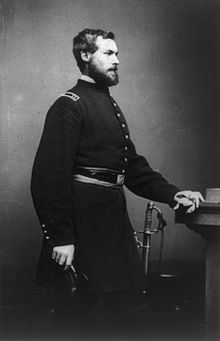Successor Philippe VIII | Successor Henri VI Name Prince Count | |
 | ||
Pretender 24 February 1848 – 8 September 1894 Tenure 24 August 1838 – 8 September 1894 Tenure 13 July 1842 – 8 September 1894 Died September 8, 1894, Stowe, United Kingdom Spouse Princess Marie Isabelle of Orleans (m. 1864–1894) Children Prince Philippe, Duke of Orleans, Amelie of Orleans Books History of the civil war in America, The Battle of Gettysburg: From the History of the Civil War in America Parents Ferdinand Philippe, Duke of Orleans, Duchess Helene of Mecklenburg-Schwerin Similar People Ferdinand Philippe - Duke of O, Princess Helene of Orleans, Amelie of Orleans, Princess Isabelle of Orleans, Henri - Count of Paris | ||
Prince Philippe, Count of Paris
Prince Philippe of Orléans, Count of Paris (Louis Philippe Albert; 24 August 1838 – 8 September 1894), was the grandson of Louis Philippe I, King of the French. He was Count of Paris, and was a claimant to the French throne from 1848 until his death. He was styled as "King Louis Philippe II", although some monarchists prefer the designation "King Philippe VII".
Contents
- Prince Philippe Count of Paris
- Princess Hlne of Orlans Duchess of Aosta
- Early life
- Marriage and issue
- Restoration of French monarchy
- References
Princess Hélène of Orléans, Duchess of Aosta
Early life
Prince Philippe became the Prince Royal, heir apparent to the throne, when his father, Prince Ferdinand-Philippe, Duc d'Orléans, died in a carriage accident in 1842. Although there was some effort during the days after the abdication of his grandfather in 1848 to put him on the throne under the name of Louis-Philippe II, with his mother (Helene of Mecklenburg-Schwerin) as Regent, this came to nothing. They fled and the French Second Republic was proclaimed in its stead.
An historian, journalist and outspoken democrat, Philippe volunteered to serve as a Union Army officer in the American Civil War along with his younger brother, Prince Robert, Duke of Chartres. He was appointed as an assistant adjutant general with the rank of captain on 24 September 1861 and served under the name of Philippe d'Orléans, the Count of Paris. He served on the staff of the commander of the Army of the Potomac, Major General George McClellan, for nearly a year. He distinguished himself during the unsuccessful Peninsular Campaign. He resigned from the Union Army, along with his brother, on 15 July 1862. Philippe's history of the Civil War is considered a standard reference work on the subject.
During their stay in the United States, the princes were accompanied by their uncle, the Prince of Joinville, who painted many watercolours of their stay. On 10 November 1880 Philippe was elected as a companion of the first class (i.e. a veteran officer) of the Pennsylvania Commandery of the Military Order of the Loyal Legion of the United States – an organization of Union officers who had served during the American Civil War. He was assigned insignia number 2107. His eldest son, Philippe d'Orleans, was elected as a 2nd class member (i.e. an eldest son of a veteran officer) in 1890 and succeeded to first class membership in the Order upon Philippe's death.
Marriage and issue
In 1864 he married his paternal first cousin, Princess Marie Isabelle d'Orléans (1848–1919), Infanta of Spain. She was daughter of Infanta Luisa Fernanda of Spain and Prince Antoine, Duke of Montpensier (1824–1890), the youngest son of Louis-Philippe of France and Maria Amalia of Naples and Sicily. They had eight children:
Restoration of French monarchy
The Orleans family had been in exile in England since the 1848 which toppled King Louis Philippe. During their early married life, the Count and Countess of Paris lived at York House, Twickenham, where the young Rosa Lewis was a member of their household. However, in 1871 after the Franco-Prussian War and the downfall of Napoleon III, they were allowed to return to France, and many of their properties were restored to them. In 1873, anticipating a restoration of the monarchy by the largely monarchist National Assembly that had been elected following the fall of Napoleon III, the Count of Paris withdrew his claims to the French throne in favour of the legitimist claimant, Henri V, best known as the Comte de Chambord. It was assumed by most that the Count of Paris was Chambord's heir, and would thus be able to succeed to the throne upon the childless Chambord's death, reuniting the two claims that had divided French monarchists since 1830. However, Chambord's refusal to recognize the tricolor as the French flag sabotaged hopes of a restoration, and Chambord died in 1883 without ever specifically recognizing his Orléanist rival as his heir.
Upon the Count of Chambord's death, the Count of Paris was recognized by most monarchists as Philippe VII of France. This succession was disputed by the Carlist descendants of the Bourbon kings of Spain, who argued that being descended directly from Louis XIV their claim was greater than that of the Orléanists'; however, this argument pointedly ignored Philip V of Spain's renunciation of his and his descendants' claim to the French throne pursuant to the Treaty of Utrecht.
In 1886 the family was exiled again returning to England, where they first lived at Sheen House, near Richmond. In 1890 they moved to the much grander Stowe House, where he died in 1894. He was succeeded as claimant to the French throne by his son Prince Philippe.
